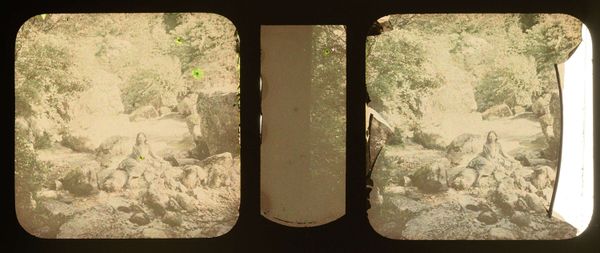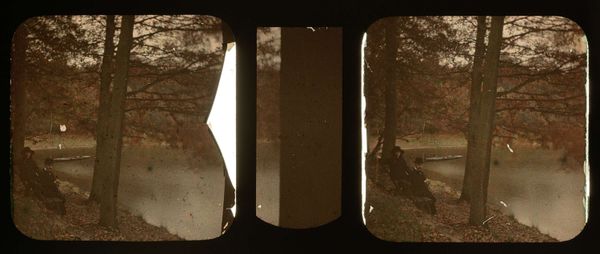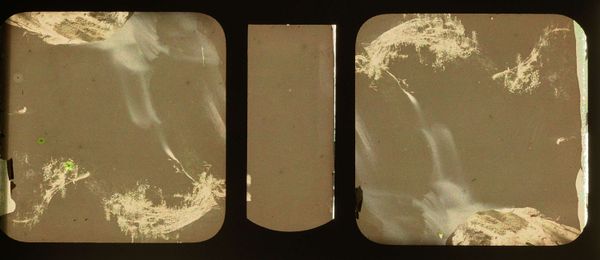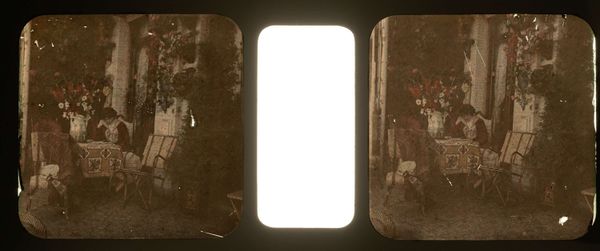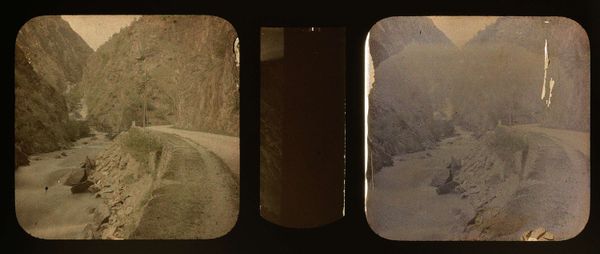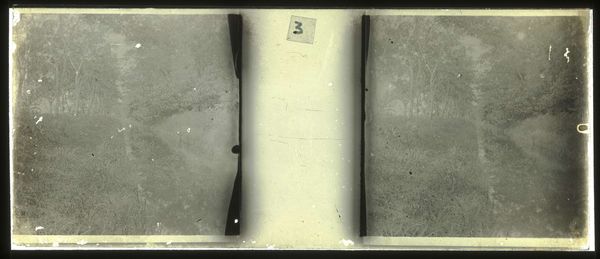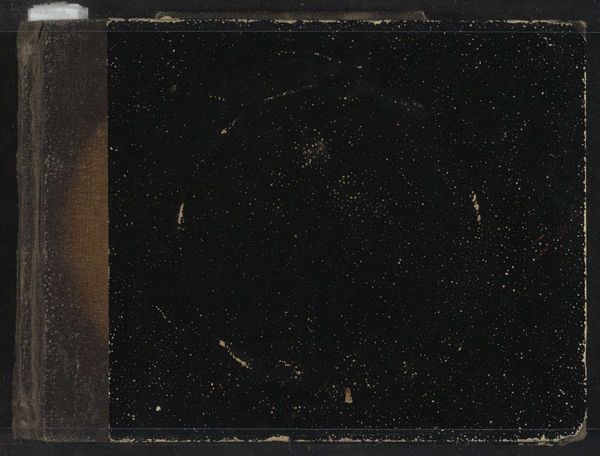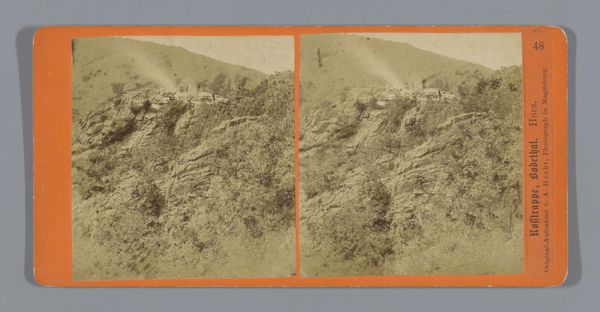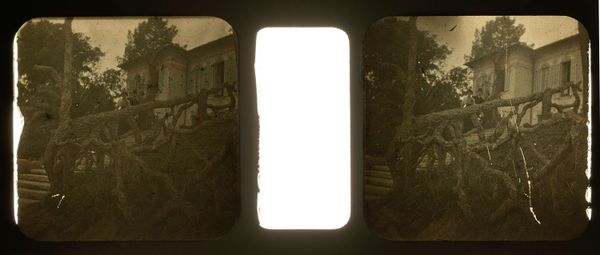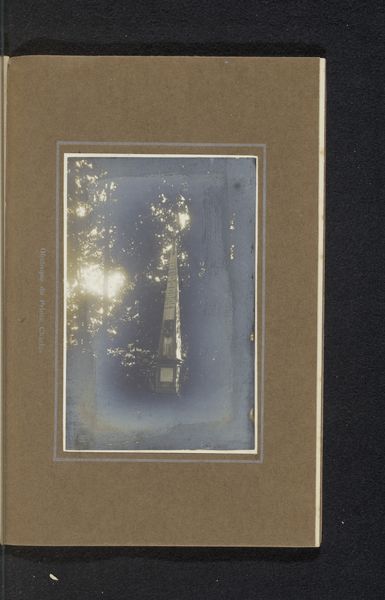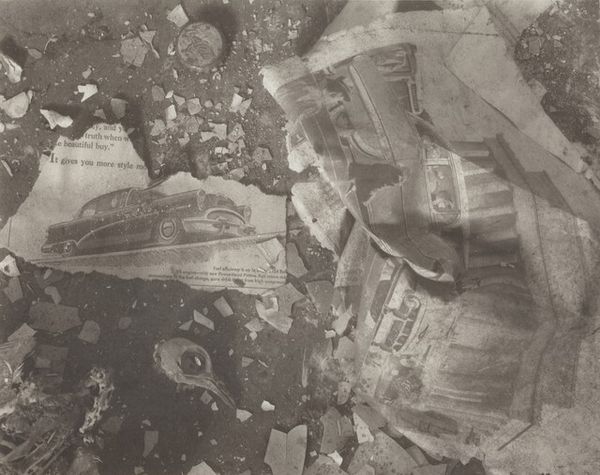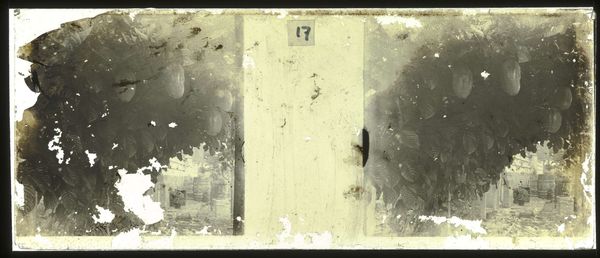
print, photography
# print
#
sculpture
#
landscape
#
photography
#
geometric
#
ceramic
Dimensions: height 75 mm, width 150 mm
Copyright: Rijks Museum: Open Domain
Curator: Welcome. We're looking at "Rotswand met tunnel," a photograph by Adolphe Burdet, created sometime between 1907 and 1935. It's part of the Rijksmuseum's collection. What's your first impression? Editor: Stark and almost claustrophobic. The dark, grainy texture is punctuated by sporadic light; the geometric form of the tunnel emphasizes a constrained perspective. The color palette reinforces this feeling of confinement. Curator: It's interesting that you pick up on the texture because I am thinking about the materiality of this work. As a print, we have to consider the photographic process in Burdet’s era—the light-sensitive materials, the developing process, and how the artist utilized readily available materials. The visible imperfections also emphasize its status as an object produced through very specific conditions and technological means. Editor: True. And the imperfections are crucial in articulating the depth. See how the mottled effect and high contrast emphasize the play of light and shadow, shaping the rockface. Curator: Precisely. It hints at labor, both the labor required in physically producing a print using older technology and labor needed for whatever road it’s showing; this road exists so goods and people can travel. What are the class dynamics implicit in infrastructure projects like this? Editor: But also how it isolates the tunnel and enhances its compositional centrality. It draws the eye inward toward an obscured point of egress and is juxtaposed by light peeking from the darkness. I read it more as a geometric void—almost an exercise in pure form. The structure almost dissolves into the textures and values. Curator: That’s a traditional interpretation. Thinking about its creation—its consumption by audiences then versus how we view the print today—allows me to explore aspects of industrialization during Burdet's life, along with class divides associated with transit systems or landscape usage that often get glossed over with aesthetic observations. Editor: I see it less about social structures. While the cultural setting doubtlessly affected his perspective, ultimately, this piece thrives on pure design principles and light play, regardless of social context. Curator: The dialogue shows there is not just one singular viewing strategy, and how images reflect technology and the labor required to get from A to B. Editor: And I was taken with how well it demonstrates shape, tone, and arrangement despite the work's historical backdrop!
Comments
No comments
Be the first to comment and join the conversation on the ultimate creative platform.
